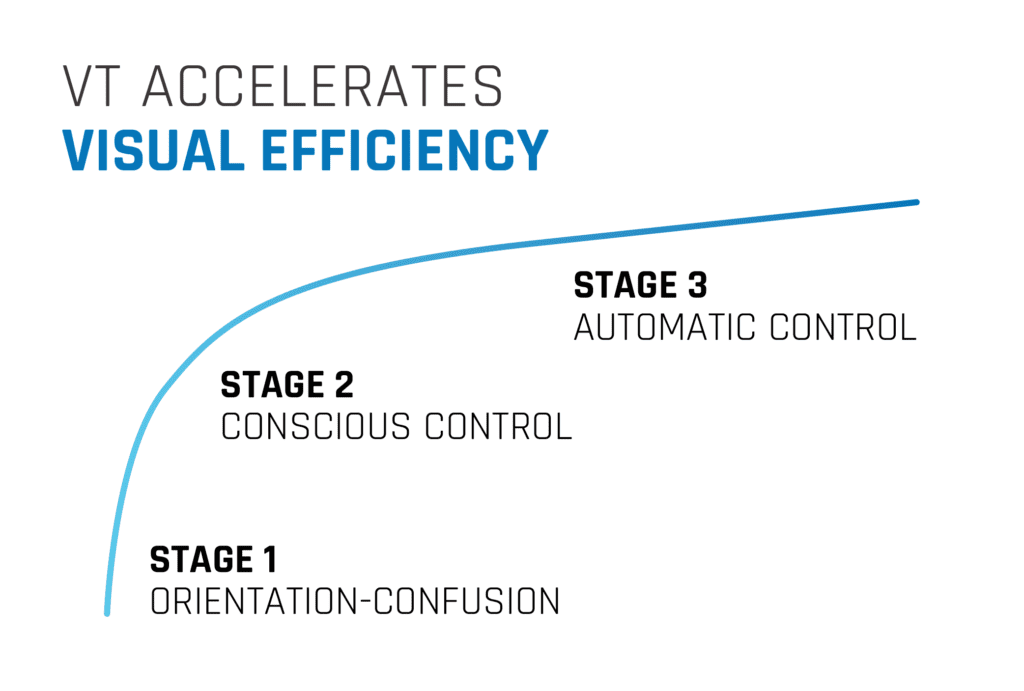Vision training is a specific procession involving procedures to
improve visual function. This process can be utilized to improve a visually
deficient athlete to obtain clinical normative values, or it can be utilized to
further improve upon visual skills that are already relatively efficient, but
still shows room for growth.
Any new skill that is learned follows a predictable learning curve. The learning process, or learning curve, generally has 3 phases that an athlete will go through. Each phase has inherent characteristics that make it identifiable. This process is important to understand in order to better direct the care of the athlete and also to ensure vision training isn’t discontinued prematurely, or so that training continues to a point of fatigue and boredom.
The 3 Phases:
- Stage 1 is called the “orientation phase”. This stage is usually the shortest of the 3 phases. During this phase, the athlete is getting a sense of the visual task that is being asked of them. S/he is also orienting to the instructor/program they are working with, i.e. learning and understanding the tools, resources, and equipment.
- Stage 2 is called the “conscious phase”. During this phase, the athlete has moved on from orientation and is now using the tools, resources, and equipment to improve upon his visual skills. Their brain is learning and reorganizing the visual process to be more efficient. It is important to note, however, that during this phase, there can be fluctuations in performance. There may be days when the visual skill is easy and then within a day or two, the same task may be difficult. This stage lasts the longest and it is where the majority of the visual improvement occurs.
- Stage 3 is referred to as the “automatic phase”. This means that little to no effort is needed in order to accomplish the visual task. The athlete can perform the newly learned visual task well enough that cognitive energy can be utilized more so for other tasks. This is advantageous because it frees up mental reserves for the athlete to make decisions about what is happening on the field. Obtaining this level is where the competitive edge is obtained.
Keep this in mind as you are progressing through your vision training program. Understanding these phases and also knowing where the athlete is along this progression is crucial. Training must be monitored and tested at regular intervals. If training is stopped before automaticity is reached, the tendency will be to regress back to the starting point. If this occurs, the learning process will have to be re-started, costing valuable time and resources.
Ryan Edwards, OD, FCOVD
Developmental Optometrist
Dynamic Center for Vision Therapy
